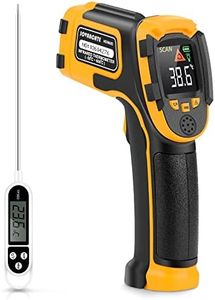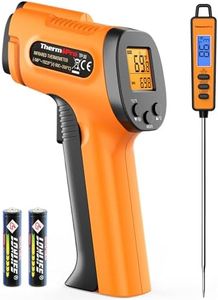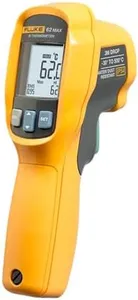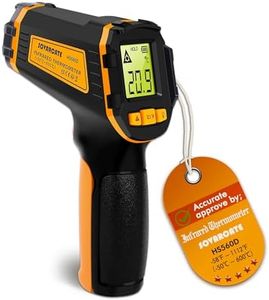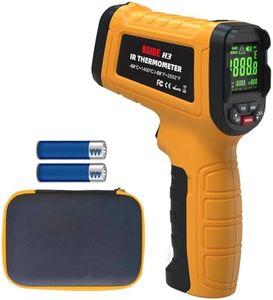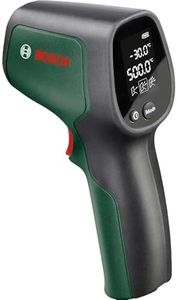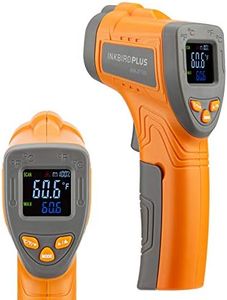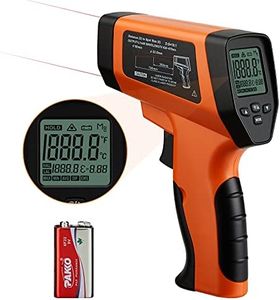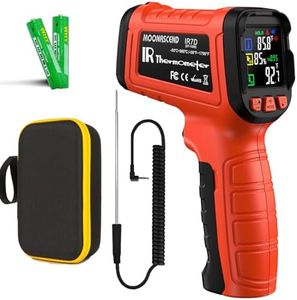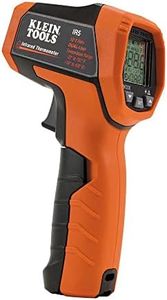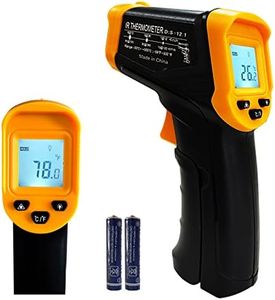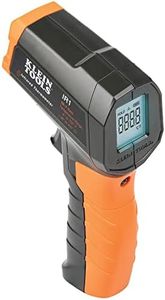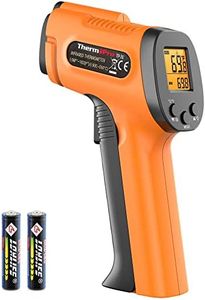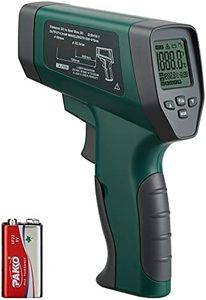We Use CookiesWe use cookies to enhance the security, performance,
functionality and for analytical and promotional activities. By continuing to browse this site you
are agreeing to our privacy policy
10 Best Laser Temperature Gun
From leading brands and best sellers available on the web.Buying Guide for the Best Laser Temperature Gun
Choosing a laser temperature gun, also known as an infrared thermometer, involves understanding how it works and knowing what features match your needs. These devices allow you to measure surface temperatures from a distance, without touching the object. They are handy for situations where it’s unsafe or inconvenient to use traditional thermometers, such as checking hot machinery, food, HVAC systems, or even home insulation. To find the best fit, it’s important to look at the specs that affect accuracy, versatility, and ease of use.Temperature RangeTemperature range tells you the minimum and maximum temperatures the device can accurately measure. A wider range means the gun can be used for more tasks, from very cold to very hot surfaces. If you plan to use it for cooking, household tasks, or checking engine parts, a moderate range is likely enough. For high-heat industry or freezing environments, a device with broader capacity is better.
AccuracyAccuracy describes how close the measurement will be to the actual temperature. A smaller error margin (usually represented as ± degrees) means more precise readings. If you need very exact measurements, such as in scientific or professional settings, choose a gun with high accuracy. For general home or casual use, a slightly bigger margin is often acceptable.
Distance-to-Spot Ratio (D:S)The distance-to-spot ratio, or D:S ratio, tells you how large an area the gun measures at a certain distance. A higher ratio means you can stand farther away and still get an accurate reading of a small spot. For measuring distant or small targets, a higher D:S (such as 12:1 or above) is better, while for close-range checks a lower D:S is usually fine.
Emissivity AdjustmentEmissivity adjustment lets you tune the device to compensate for how much infrared energy different surfaces emit. Some guns have a fixed value, while others let you change it. If you’ll measure many types of material (like metals, wood, or plastic), adjustable emissivity helps ensure accuracy; for simple or similar tasks, fixed emissivity could be sufficient.
Response TimeResponse time indicates how quickly the device displays a temperature reading. Faster response times are useful if you’re checking multiple items quickly or monitoring moving objects. For most household uses, speed isn’t critical, but in professional or industrial environments, quicker response ensures efficient work.
Display and ControlsThe display shows your readings and sometimes additional info (like battery life or max/min values). Easy-to-read screens and simple controls mean you’re less likely to make mistakes in use. If you’ll be using the gun outdoors or in dim lighting, backlit displays and large, clear numbers are especially helpful.
Additional FeaturesExtra features can include laser pointers for aiming, memory for storing past readings, or modes like max/min/average temperature. Laser pointers make it easier to aim, while memory or data logging is useful for record-keeping. Decide which features align with your workflow or tasks to avoid overcomplicating your choice.
